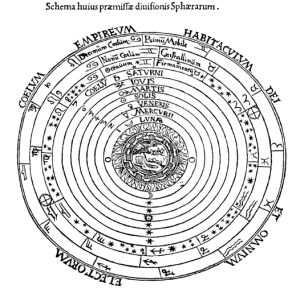Science is full of models and models change and get better and better as representations of reality.
Where did it start? Did it start with naming things? Then continue with abstracting to numbers of things?
Ever since the mind started to be a central part of our awareness it has tried to understand both what it perceives from the external (senses) as from internal sources as intuition, dreams or internal subconscious impressions.
In the early stages of development we probably as advanced animals expressed different sounds to interact. Perhaps even in the same way as monkeys do today. We have even discovered dialects between monkeys.
Going even further back we might have had a pre-expressed-language, based on a tribal belonging, or species coherence, a higher degree of holonity or harmonic interaction, where we acted as one being – the group or tribe. This stage might have preceded the stage of separating into individuals.
With the individual mind, we started to challenge and discuss different opinions. Analysis is born out of differentiating and tearing apart, rather than uniting in synthesis.
As we put things apart we put them in different categories, we make different models.
As a generalization we can talk about two major categories of models; vertical and horizontal.
The vertical models try to explain phenomenon that creates a hierarchy, stages of development or any process that is a function of time.
Horizontal models express the variations we find within any of the above stages.
The vertical would be like the grades in a school, the horizontal the stereotypes or archetypes of different student-types.
Lets look at plants and models or systems of classification
With traveling and trade, the need for understanding analogical words for minerals, foods, spices, cloths, plants and animals or products made from them became clear. With the development of science the need to specify became absolute and Linné developed the bi-nomimal system.
With this system it was possible to name any plant or animal with just two names, a little similar to what many persons do with personal names.
The latest development of classification of plants is called APG III (Angiosperm Phylogeny Group III system) with this model we can see how the whole plant kingdom has evolved through time and how different plants relate. We can even see how the whole kingdom has analogies to other kingdoms.
In this blog we will explore such relations and how we can see things from both the perspective of wholeness as well as the perspective of unity, in short a holonistic perspective.
Ill: This diagram shows the medieval understanding of spheres of the cosmos, from Aristotle as per the understanding of Ptolemy.

